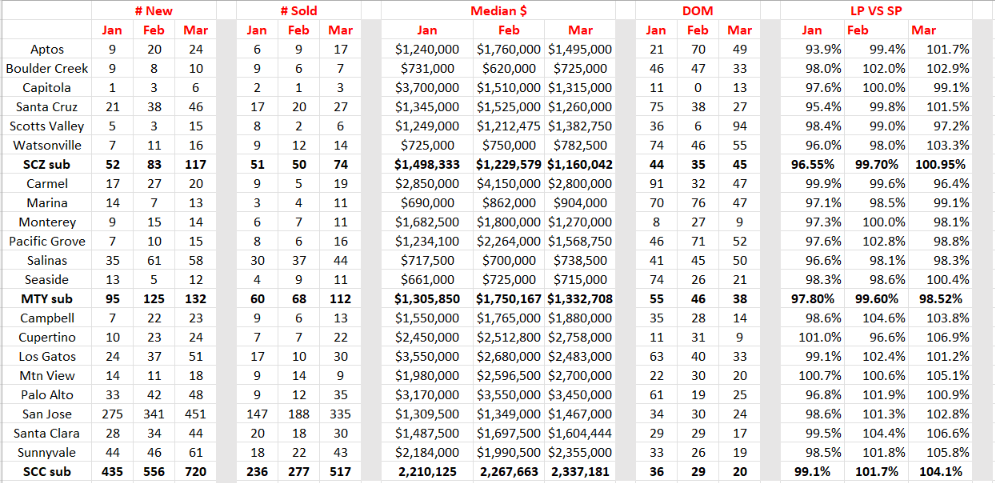
APRIL 2023
2022 California housing affordability by ethnicity
Housing affordability deteriorated in 2022 for all California ethnic home-buying groups, as home prices soared to record highs last year, and interest rates jumped to levels not seen in more than a decade, the CALIFORNIA ASSOCIATION OF REALTORS® said.
Twenty-one percent of all Californians earned the minimum income needed to purchase a home in 2022, down from 27% in 2021. At the same time, housing affordability for White/non-Hispanic households fell from 32% in 2021 to 26% in 2022. Twelve percent of Black and Hispanic/Latino households could afford the same median-priced home in 2022, down from 16% and 17% in 2021, respectively. The significant difference in housing affordability for Black and Hispanic/Latino households illustrates the homeownership gap and wealth disparity for communities of color, which could worsen as the economy slows and rates remain elevated in 2023.
Mortgage demand gets a boost from bank uncertainty.
According to an article from CNBS two weeks ago, stress in the banking system sent mortgage rates lower, and as a result, mortgage demand rose 2.9% compared with the previous week, according to the Mortgage Bankers Association. The fourth straight week of purchase loan gains, however, could be short-lived, as rates are now moving higher again.
Then just this past week they reported that mortgage rates fell, but demand for home loans didn't move higher as a result. Other aspects of today's housing market are outweighing the benefit of lower mortgage rates right now, namely a lack of supply. Mortgage applications to purchase a home, however, dropped 4% last week compared with the previous week, according to the Mortgage Bankers Association's seasonally adjusted index. Demand was 35% lower than the same week one year ago.
"Spring has arrived, but the housing market is missing the customary burst in listings and purchase activity that typically mark the season. After four weeks of increasing purchase application activity, volume declined a bit this week even with another small drop in mortgage rates," said Mike Fratantoni, MBA's chief economist. New listings were down 20% year over year in March, according to Realtor.com, and total inventory was about half of what it was in March 2019, pre-Covid pandemic. Are you as confused as I am?
Court certifies class in NAR commission case
The Northern Illinois U.S. District Court has certified (or determined to proceed) the class action of sellers suing NAR and seven corporate real estate brokerages that operate in 20 MLSs in 13 states across the country. The case does not include MLSs in California. The plaintiffs allege that the MLS structure and rules inflate commissions paid by sellers due to MLS rules. NAR vigorously contests the allegations and maintains the MLSs are very procompetitive benefiting the public as well as the real estate professionals that serve them.
The court's ruling denied the request to exclude the plaintiffs' experts' testimony. Of course, NAR and others will also have the opportunity to produce experts indicating the procompetitive nature of the real estate industry and individually negotiated commissions that are beneficial to both home buyers and sellers. The case has yet to be tried before a jury.
Concerns have been raised by observers about the impact of any result that would radically change practices that are beneficial to first-time or marginal homebuyers. These buyers need representation in difficult transactions but may not be able to obtain such services if the court rulings effectively result in buyers paying up-front payments for professionals in a way that reduces available cash for down payments.
Entering the Smart Zone
The economy is still exhibiting resilience despite slower growth in recent weeks. Although consumers' view on their present situation took a step back, improvement on their outlook continued to edge higher. The strong labor market has much to do with it, as it continues to push real wages higher and keep the economy from falling behind. That said, real spending is losing steam and it may not be too long before demand begins to pull back, sending the economy into correction mode. Meanwhile, as mortgage rates dip, applications to purchase or refinance continue to increase. The spring buying season, however, may not be as strong as prior years, as housing supply is expected to be tight in coming months due to lock-in effect.
When will it end, and people can come together?
Hours after the state sued Huntington Beach for refusing to approve a builder's remedy granny flats projects, the Orange County city heaved its own legal challenge back to Sacramento. Huntington Beach filed a lawsuit against the state in federal court late Thursday, saying it's not required to obey a state housing requirement that it finds room to build nearly 13,400 homes by 2030, the Orange County Register reported.
The 59-page lawsuit alleges that state housing laws, including an eight-year housing plan known as the Regional Housing Needs Assessment, violate the city's right to zone property. Mayor Tony Strickland said the state's goal is to "urbanize California" by mandating an amount of housing that would turn suburban communities like Huntington Beach into dense urban landscapes like Los Angeles and San Francisco.
"Our citizens don't want to live in an urban coastal community," Strickland said in an afternoon press conference, The new complaint cites violations of the U.S. and state constitutions, saying that if allowed to proceed, the state "will continue with an unbridled power play to control all aspects of the City Council's land use decisions in order to eliminate the suburban character of the city and replace it with a high-density mecca."
That so-called mecca would be achieved through "forced rezoning," allowing developers to construct high-density projects and leave the council with "no discretion to deny or condition invasive high-density development," according to the lawsuit. It alleges the state-mandated housing element threatens the health, safety and welfare of the city and would overburden infrastructure, damage environmentally sensitive areas because the city is already nearly built out and devalue private property.
1st Quarter 2023 stats for Santa Cruz, Monterey & the Bay Area
Comments: I honestly thought I would see some significant changes in the stats for March. Granted inventory is up in all 23 counties but it is spring. Sales are up 48%, 64%, and 86% respectively but those most likely sold in Jan or Feb and closed in March. Median price declined slightly in Santa Cruz and Monterey counties and increased slightly in Santa Clara. The days on market increased 28% in Santa Cruz while decreasing overall in the other two counties which normally happens as it usually takes a month or two for Santa Cruz to follow a trend. BUT the list to sales price ratio is what is really surprising to me as this is the indicator of what is happening in the market and look at how much it increased in Santa Clara County and especially the higher priced areas of Cupertino, Mtn View. It looks like what happened at the end of 2020 when prices started to rise. In Santa Cruz it is the lower priced areas that have a higher ratio and my theory in Monterey County with the lower priced area rising and the higher priced areas declining. Am I going about this all wrong? You tell me...(Display of MLS data is deemed reliable but is not guaranteed accurate by the MLS)


